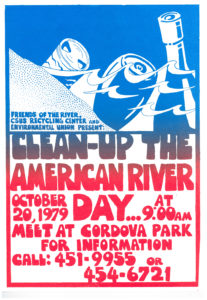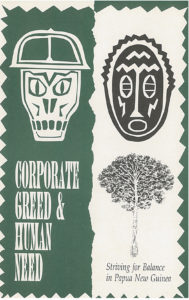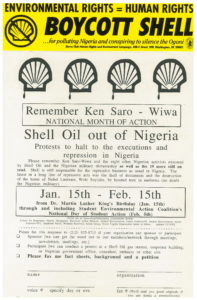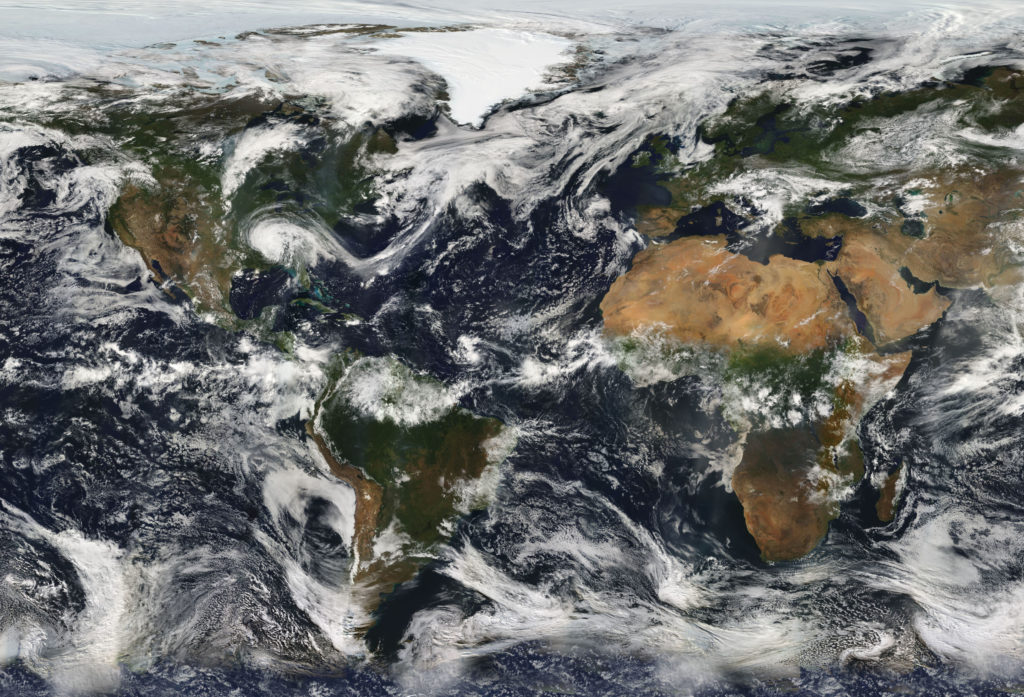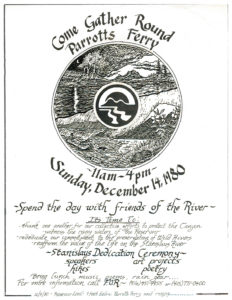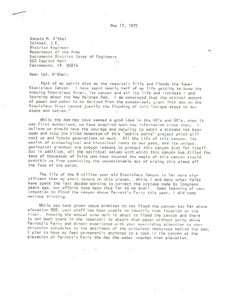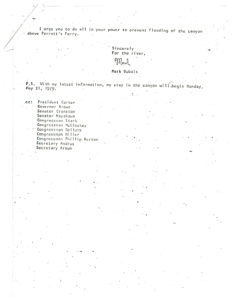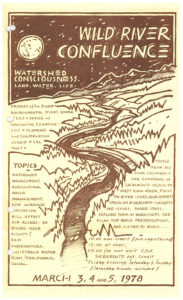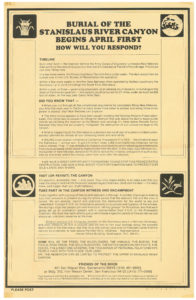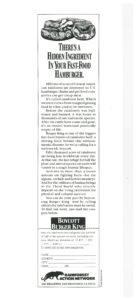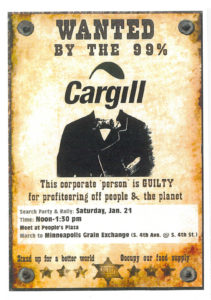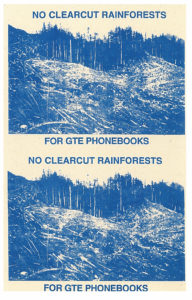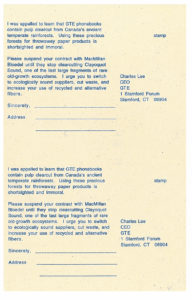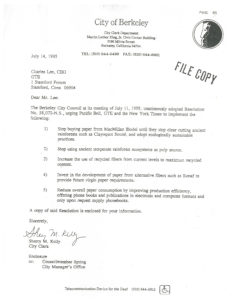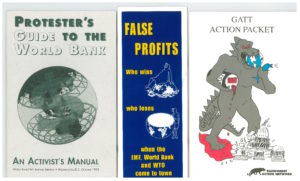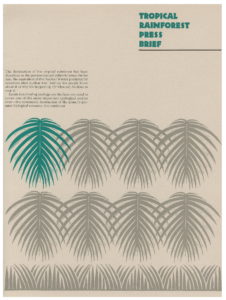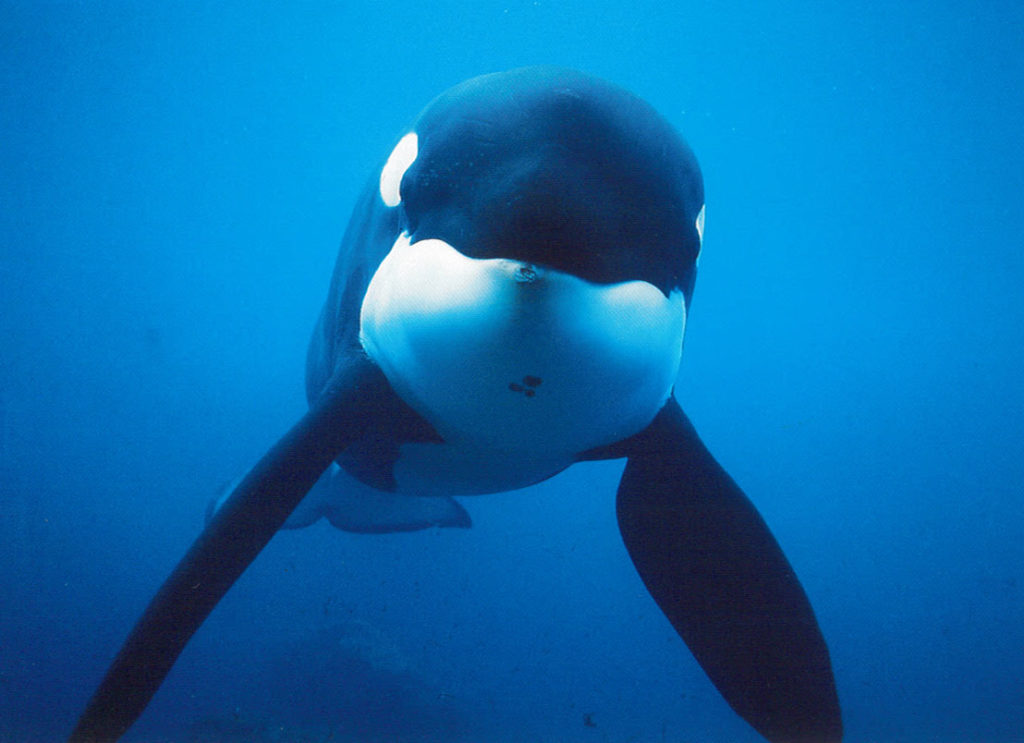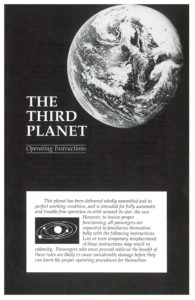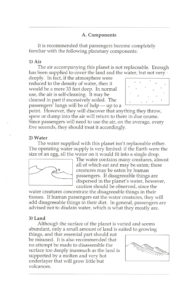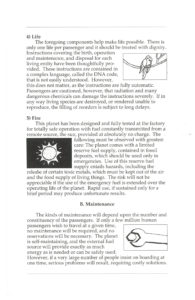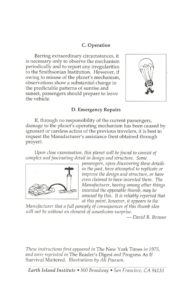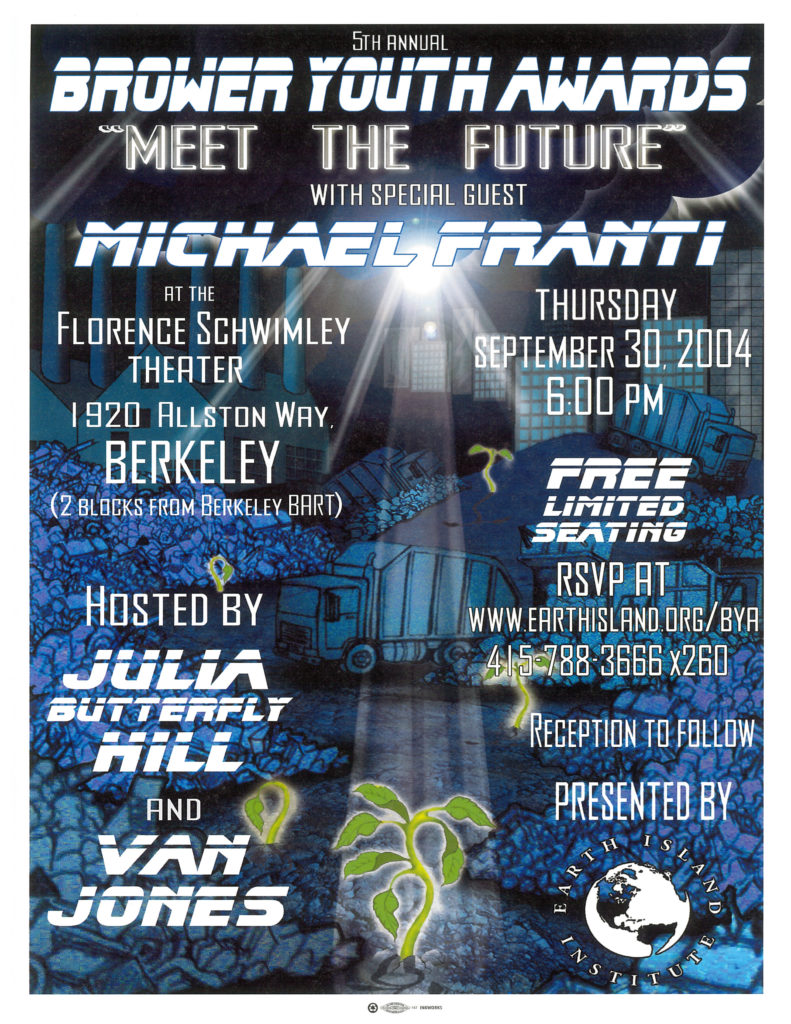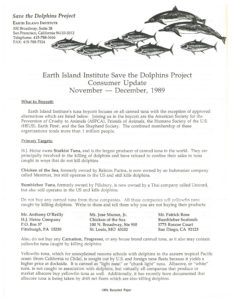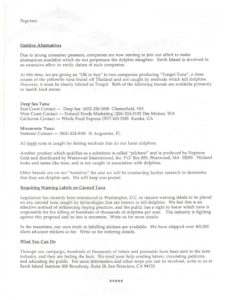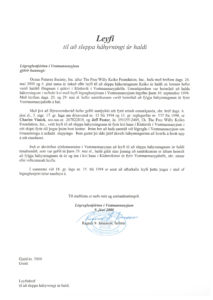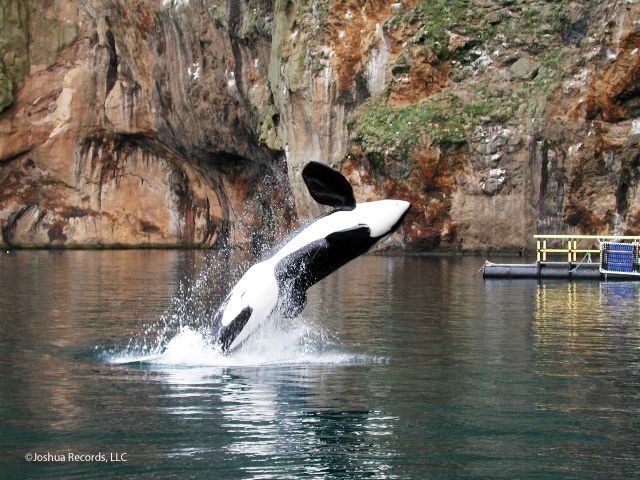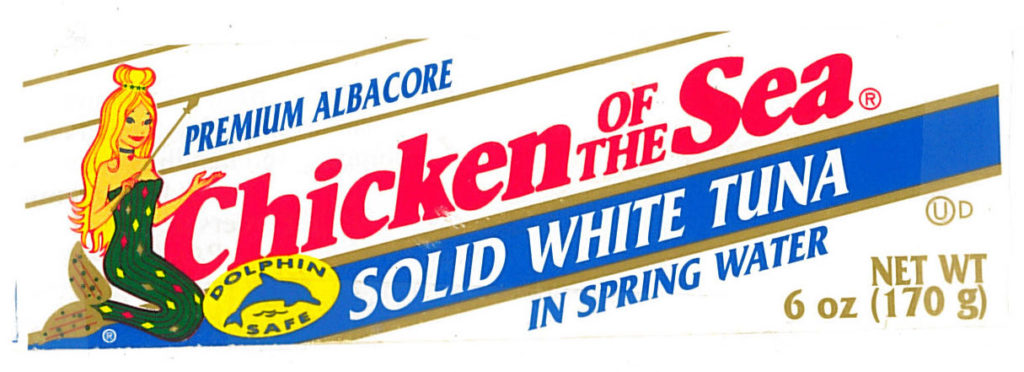Manuscript Collections
Bancroft Quarterly Processing News
The archivists of the Bancroft Library are pleased to announce that in the past quarter (October-December 2023) we opened the following Bancroft archival collections to researchers.
Manuscript and University Archives Collections:
Morris Goldstein papers (processed by Presley Hubschmitt)
ruth weiss papers (processed by Simi Best)
Robert A. Scalapino papers (processed by Lara Michels)
Elizabeth Rauscher papers (processed by Jessica Tai)
Walter S. Hertzmann collection on the Hertzmann and Koshland families (processed by Presley Hubschmitt)
Bush Street Synagogue Cultural Center records (processed by Presley Hubschmitt)
Erle Stanley Gardner papers (processed by Randy Brandt)
Charles W. Leach correspondence (processed by Lara Michels)
Lynn Manning papers, additions (processed by Lara Michels)
Pictorial Collections/Items:
65 small collections and single items (approximately 6,119 items, total)
Lonnie H. Wilson Photograph Archive: over 1000 negatives documenting the William F. Knowland gubernatorial campaign of 1958 and the Republican and Democratic Party conventions of 1960 were processed and added to the existing finding aid.
Pictorial collections staff: James Eason, Chris McDonald, Lori Hines, Sara Ferguson, and Isabel Breskin.
Collections Currently in Process:
- Data Center records
- Associated Students of the University of California, Berkeley records
- Patricia Buffler papers
- Nathan and Julia Hare papers
- Daisy Zamora papers
- Harriet Smith papers
- Barbara Oliver collection of theater materials
- Howard Besser papers
- Delmer Myers Brown papers
- Benjamin Swig papers and photographs
- Isabel Wiel family papers and photographs
Bancroft Quarterly Processing News
The archivists of The Bancroft Library are pleased to announce that in the past quarter (July-September 2023) we opened the following Bancroft archival collections to researchers.
General and UARC Collections:
Michael Paul Rogin papers (processed by Marjorie Bryer)
Acción Latina records and El Tecolote newspaper archive (processed by Marjorie Bryer)
Pam Levinson papers (processed by Presley Hubschmitt)
William Moore journals and other papers (processed by Lara Michels)
Renee Gregorio papers (processed by Simi Best)
Howard A. Brett collection of Panama Canal materials (processed by Lara Michels)
C. (Walter Clay) Lowdermilk papers (processed by Presley Hubschmitt)
Mosaic Law Congregation records (processed by Presley Hubschmitt)
Daniel Holmes collection of Sierra Club burro trips and Yosemite National Park backcountry research (processed by Jaime Henderson)
Triangle Gallery records (processed by Dean Smith)
Western Jewish History Center records (processed by Presley Hubschmitt)
Bransten and Rothmann family papers (processed by Presley Hubschmitt)
Friends of the River collection (transfer from UC Riverside; additional processing work by Lara Michels and Jaime Henderson)
George W. Barlow papers (processed by Jessica Tai)
Streetfare Journal records (processed by Lara Michels and student processing assistant Malayna Chang)
Roger Parodi collection of art museum and gallery announcements (processed by Lara Michels and student processing assistant David Eick)
Israel Louis Greenblat papers (processed by Presley Hubschmitt)
American Cultures Center records (processed by Jessica Tai)
Larry Orman archive of The Friends of the Stanislaus River materials (processed by Jaime Henderson)
Hamilton Boswell papers (digital materials processed by Christina Velazquez Fidler)
Pictorial Collections:
130 small collections and single items (approximately 6,650 items, total)
William F. Knowland’s gubernatorial campaign of 1958 photographs (and miscellaneous subjects added in Series 4 of the Lonnie Wilson archive)
3,155 new scans from Thérèse Bonney’s WWII era photographs from Finland, 1939, and France, Portugal, Belgium 1940
Collections Currently in Process:
Elizabeth A. Rauscher papers (Jessica Tai)
Associated Students of the University of California, Berkeley, records (Jessica Tai)
California Faience archive (Jaime Henderson)
Jan Kerouac papers (Marjorie Bryer)
Sister Makinya Sibeko-Kouate papers (Marjorie Bryer)
Nathan and Julia Hare papers (Marjorie Bryer)
Morris M. Goldstein papers (Presley Hubschmitt)
Hertzmann and Koshland family papers (Presley Hubschmitt)
Bush Street Synagogue Cultural Center records (Presley Hubschmitt and student processing assistant Malayna Chang)
Charles Muscatine papers–digital component (Christina Velazquez Fidler)
ruth weiss papers (Simi Best)
Bancroft Quarterly Processing News
The archivists of The Bancroft Library are pleased to announce that in the past quarter (April-June 2023) we have opened the following Bancroft archival collections to researchers.
Western Americana collections:
The role of women in the Black movement conference materials (processed by Marjorie Bryer)
Jonathan Winters collection on campus and East Bay LGBT activism (processed by Marjorie Bryer)
Edward Miyakawa papers (processed by Marjorie Bryer)
YMCA of San Francisco, Chinatown branch records, approximately 1915-2010 (processed by Marjorie Bryer)
Nan Tucker McEvoy collection (processed by Jaime Henderson and Marjorie Bryer)
Joni Jacobs collection of mayoral campaign materials (processed by Lara Michels)
Louise Taber family papers (processed by Lara Michels and student processing assistant Malayna Chang)
Central American Labor Defense Network records (processed by Marjorie Bryer)
Elaine Dorfman papers and oral histories (processed by Presley Hubschmitt)
Oakland-Piedmont Jewish Community Center records (processed by Presley Hubschmitt)
B’nai B’rith, San Francisco Lodge No. 21 records (processed by Presley Hubschmitt)
Rosene Family papers (processed by Lara Michels)
Women’s American ORT, San Francisco Chapter records (processed by Presley Hubschmitt)
Jerome H. Bayer papers (processed by Presley Hubschmitt)
Keesling family collection of John Henry Barbat correspondence, photographs, and realia (processed by Lara Michels)
Joel Bolster correspondence, 1851-1852 (processed by Lara Michels)
Harold Dobbs scrapbooks and photo albums (additional processing and finding aid written by Lara Michels)
Keesling family collection of Stebbins family papers (processed by Lara Michels)
William R. Sanford and Charles T. Forbes correspondence and sketches related to Native American archaeology, Owens Valley, California (processed by Lara Michels)
Presbyterian Church in Chinatown, San Francisco, additions (2019-08-16) (processed by Lara Michels)
Sierra Club mountain registers and records, 1860-2005, additions (processed by Lara Michels)
Robert (Bob) Edward Rooker rodeo archive (processed by Jaime Henderson)
Warren Hinkle papers (digital files) (processed by Christina V. Fidler)
Vivian Low collection of materials on the Military Intelligence Service Language School, Chinese Division, 1945-2017 (digital files) (processed by Christina V. Fidler)
Judith Heumann papers (digital files) (processed by Christina V. Fidler)
Literary and Arts collections:
Anne S. Perlman papers (processed by Marjorie Bryer)
Robert D. Brotherson collection of the Activist Group of Poets (processed by Marjorie Bryer)
Nancy Karp + Dancers records (processed by Jaime Henderson and Lara Michels)
Claire Van Vliet letters to Frederick W. Hegeman, 1977-1988 (processed by Lara Michels)
Kenneth Perkins papers (processed by Randal Brandt and Sterling Kinnell)
University Archives and Faculty Papers collections:
University of California, Berkeley, Department of Women’s Intercollegiate Athletics records (processed by Jessica Tai)
Harold Biswell papers (processed by Jessica Tai)
Joseph L. Sax papers (processed by Lara Michels)
Robert Tracy papers (processed by Michele Morgan and Lara Michels)
Jaroslav Joseph Polivka papers (processed by Lara Michels)
Lawrence Levine paper (digital files) (processed by Christina V. Fidler)
Jacqueline Ellen Violette de La Harpe papers (additions) (processed by Marjorie Bryer)
Pictorial collections:
Acción Latina and El Tecolote pictorial archive photographic print and poster collection (processed by Isabel Breskin with James Eason)
Fakir Musafar archive (processed by Lori Hines)
John S. Service photograph collection (processed by Isabel Breskin with James Eason)
Photographs from the Noël Sullivan papers (1 unprocessed box)
185 small pictorial collections and single items.
Collections currently in process include:
- The papers of George Barlow, UC Berkeley ichthyologist, ethologist and evolutionary biologist (processing work by Jessica Tai)
- The papers of Michael Paul Rogin, UC Berkeley political scientist notable for his critique of American imperialism (processing work by Marjorie Bryer)
- University of California, Berkeley, American Cultures Center records (processing work by Jessica Tai)
- Western Jewish History Center records (processing work by Presley Hubschmitt)
- Acción Latina records (processing work by Marjorie Bryer)
- Haas-Bransten-Rothman family papers (processing work by Presley Hubschmitt)
PhiloBiblon 2023 n. 4 (June): The Bancroft Library’s Fernán Núñez Collection
I am delighted to announce that thanks to the efforts of Randy Brandt, Head Cataloguer of The Bancroft Library, it is now possible to find all of the volumes in Bancroft’s Fernán Núñez Collection.
This collection of 224 manuscripts comes from the library of the counts and then dukes of Fernán Núnez, a town near Córdoba, principally from that of the 6th count of Fernán Núñez, Carlos José Gutiérrez de los Ríos y Córdoba (1742-1795), although the nucleus of the collection probably goes back to Juan Fernández de Velasco (1550-1613), 5th duke of Frías and viceroy of Milan. According to the Diccionario Biográfico electrónico of the Real Academia de la Historia, Gutiérrez de los Ríos was a man of broad culture who wrote a biography of King Carlos III and was an honorary member of the Real Academia de Bellas Artes de San Fernando in Madrid and the Real Academia Sevillana de Buenas Letras.
University of California, Berkeley
Askins, Arthur L-F. “The Cancioneiro da Bancroft Library (previously, the Cancioneiro de um Grande d’Hespanha): a copy, ca. 1600, of the Cancioneiro da Vaticana.” Actas do IV Congresso da Associação Hispânica de Literatura Medieval. Lisboa: Edições Cosmos, 1991: I:43-47 (BITAGAP bibid 2595)
Changing the Course of Wildfire Management in California: Highlights from the Harold Biswell Papers
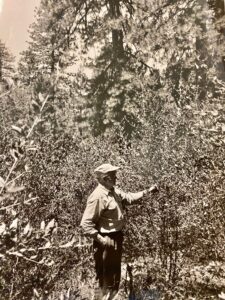
The Harold H. Biswell papers are now open to researchers at the Bancroft Library. Harold H. Biswell (1905-1992) served as a faculty member in the School of Forestry from 1947 to 1973. Biswell was a researcher, teacher, and advocate of the use of prescribed burning for fire management. Prescribed burns are intentionally-set fires for purposes of forest management, fire suppression, farming, prairie restoration or greenhouse gas abatement. The Biswell papers include photographs and slides of controlled burns and survey images of California forests, chaparral, and ranches. The collection also contains articles by Biswell and others, reports, booklets, survey and research material, School of Forestry theses, and other material related to controlled burning and forest ecology.
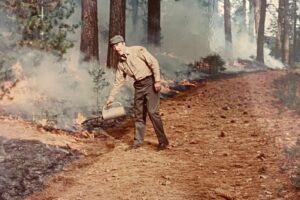
Indigenous peoples were the first to use cultural burning for managing vegetation and wildlife habitats. “Cultural burning” refers to the Indigenous practice of intentionally setting fires in alignment with traditional belief and knowledge systems to revitalize habitats or provide a desired cultural service, such as promoting the health of vegetation and animals that provide food, clothing, ceremonial items and more. These practices were disrupted by European colonization and forced relocation of Indigenous communities from the lands they had been maintaining for centuries. In 1850, California passed the Act for the Government and Protection of Indians, which outlawed intentional burning. These bans, guided by a strategy of fire suppression, led the way for a rapid increase in destructive wildfires, as well as the inability for Indigenous people to practice traditional cultural burning practices.
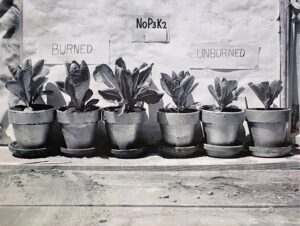
Despite opposition and direct criticism, Biswell continually advocated for developing new policies for prescribed burning. Biswell staked his academic reputation on demonstrating that prescribed burns improved ecosystem health and reduced wildfire threats. The Forest Service began to examine its fire exclusion policy in the early 1970’s, and in 1978 the national policy was changed to encompass total fire management including prevention, suppression, and use. Prescribed burns are now recognized as a critical tool to reduce the severity of wildfires.
Newly-processed additions to the Sierra Club Records at The Bancroft Library are the latest highlight of an NHPRC grant-funded project to make available 13 archival collections relating to environmental movements in the Western U.S.
Happy Birthday to the Sierra Club – turning 128 years old this month
And many more! Now one of the oldest and largest conservation organizations in the world, the Sierra Club was founded on May 28, 1892 in San Francisco by John Muir to promote conservation of the natural environment through public education, legislation and citizen action. Since then, the club has achieved a number of notable victories, including establishing and protecting national forests, parks and monuments; stopping dam construction in the Grand Canyon and Dinosaur National Park; fighting to keep the Antiquities Act intact; and campaigning for the passage of the Alaska National Interest Lands Conservation Act and the Wilderness Act.
Fortunately, the significance of this non-profit organization’s unparalleled history of conservation was recognized early on, even before the modern environmental movement truly took off. In 1958 The Bancroft Library became the official repository for the Sierra Club. The first series of records from the organization came through Bancroft’s doors in the 1970s. Over the decades the collection has grown with periodic installments as more recent records are added to the archives. The Sierra Club collection is a significant part of what has evolved into a major collecting theme within Bancroft’s curatorial umbrella of Western Americana: environmental movements of the 20th century.
Project wrap-up: NHPRC grant makes available newly-opened environmental collections and additions to ongoing collections
The Bancroft Library is pleased to report the completion of a two-year National Historical Publications and Records Commission (NHPRC) grant project resulting in the processing of 13 collections totaling 384.25 linear feet of records. These newly-accessible resources include the latest additions to four collections of Sierra Club records, along with nine other archival collections relating to environmental movements in the Western U.S.
The collections processed for the project — selected by Theresa Salazar, Bancroft’s Curator of Western Americana — were chosen because of high demand and their likely benefit to multiple areas of scholarship. Topics in these collections include a wide range of ecological issues related to protection and conservation of the environment via legislation and greater transparency and accountability in the wake of environmental damage. The research value of these collections is potentially wide and diverse, especially for scholars in fields such as history, environmental and forest science, natural and renewable resources, environmental and social justice, indigenous rights, human rights, animal rights and endangered species.
Archival processing of environmental collections
Processing archival collections entails intellectual and physical arrangement and description of the papers or records in a finding aid and catalog records published in library catalogs. When processing, archivists look for evidence of archival value in the materials to justify their continued preservation and storage. This is generally defined as the ongoing usefulness and significance of the materials in regards to the administrative, legal, fiscal, evidential or historical information they contain.
The processing of the Sierra Club records has proven to be especially complex. Because the organization’s records comprise a large and complex body of material, the Library determined early on that the material would be divided into more easily processed sub-collections, each of which would be further organized according to the conventional archival hierarchy of series and sub-series. These sub-collections include the general Sierra Club records, the Sierra Club San Francisco Bay Chapter and the Sierra Club California Legislative Office records, among many others.
Types of records found in the Sierra Club and other environmental collections at Bancroft may include correspondence and notes, grassroots organizing, outreach and educational campaigns, membership and promotional materials, program and subject files, reports and studies, lobbying letters, testimony, legislation and legal briefs, newsletters, clippings, maps, photographs and posters. Numerous Sierra Club oral histories, audio-visual materials and related pictorial collections can also be found at Bancroft.
Bancroft a leading repository for U.S. environmental documentation
Environmental collections are among the most frequently used materials at Bancroft. As is reflected in the material selected for the NHPRC grant, The Bancroft Library holds the records of many important environmental organizations and the papers of a range of influential environmental activists. Collections of other environmental organizations currently available for research at The Bancroft Library include the records of the Jenner Coastside Conservation Coalition, Save the Bay, Save-the-Redwoods League and Urban Habitat. Also available are the papers of environmental educators, leaders and activists such as David Brower, Newton B. Drury, Mark Evanoff, Aldo Leopold, Robert Marshall, Sylvia McLaughlin and Margaret Wentworth Owings. The Bancroft Library also holds pictorial collections pertaining to Ansel Adams and the Rainforest Action Network, and many collections of photographs showing degradation of the environment caused by deforestation and logging, wildfires, toxic substances and pollutants, floods, drought, and war.
Collection guides and further reading
Descriptions of The Bancroft Library’s archival collections can be accessed by searching Oskicat for catalog records and at the Online Archive of California for more in-depth finding aids. Selected digitized material from these collections is available via Calisphere and the UC Berkeley Digital Collection. In-person access to Bancroft’s collection material can be requested by the library’s online request service Aeon and by visiting the library’s Heller Reading Room during open hours.
Within many of the environmental movements there are overlapping figures and groups, such as Berkeley’s own David Brower who was the first Executive Director of the Sierra Club and co-founder of Friends of the Earth and Earth Island Institute. It is therefore advisable that researchers look for information pertaining to “related collections” and “materials cataloged separately” when consulting collection guides. Such notes are usually presented in the catalog record and among the introductory information of the finding aid for any given collection.
Finding aids for the environmental collections recently made accessible by the NHPRC grant project are linked here:
- Arizona Toxics Information records
- Earth Island Institute records
- Friends of the Earth records
- Friends of the River Foundation records
- Kenoli Oleari records of the Coalition for Alternatives to Pesticides
- Rainforest Action Network records
- Small Wilderness Area Preservation records
- Trustees for Conservation records
- Thomas J. Graff papers
- Sierra Club records
- Sierra Club California Legislative Office records
- Sierra Club Legal Defense Fund records
- Sierra Club San Francisco Bay Chapter records
Previous UC Berkeley Library Update posts from the past two years delve deeper into the histories, activities and records of some of the organizations whose collections were made accessible via the NHPRC grant project. In addition to the collection descriptions found in each collection’s finding aid, these Library Update articles offer helpful overviews and are illustrated with images of noteworthy collection material.
To learn more about Arizona Toxics Information and their fight to promote transparency and the right-to-know about pollutants and toxics along the Arizona-Mexico border, go here.
For an article on Earth Island Institute’s role as a Berkeley-based incubator network for conservation groups, including the Marine Mammal Institute, follow this link.
To find out more about the Friends of the River Foundation and their river protection campaigns, including their lengthy battle to halt construction of the New Melones Dam along the Stanislaus River, read this article.
A post about the Rainforest Action Network and their international campaigns to protect forests and promote environmental justice can be accessed here.
Information about the Sierra Club Legal Defense Fund (renamed Earthjustice in 1997) and why “the earth needs a good lawyer” can be found in this post.
Additions to the Sierra Club Legal Defense Fund Records Now Open at The Bancroft Library
A two-year grant project funded by the National Historical Publications and Records Commission to make available a range of archival collections relating to environmental movements in the West has enabled The Bancroft Library to process additions to its already significant holdings of the Sierra Club Legal Defense Fund records.
The Sierra Club Legal Defense Fund was established in 1971 in San Francisco as a not-for-profit public interest group dedicated to litigating environmental battles for the Sierra Club and groups and individuals affiliated with the organization. The Fund works with community partners to fight for clean air and water and to protect wilderness and wildlife through litigating cases and preparing friend of the court (amicus curiae) briefs that provide information and expertise on numerous environmental issues. In 1997, the Sierra Club Legal Defense Fund changed its name to Earthjustice and the group continues to fight cases on environmental issues into the 21st century. The Earthjustice motto, “Because the Earth needs a good lawyer,” has been cited as one of the best non-profit taglines to clearly convey an organization’s solemn mission with emotion and humor.
The Sierra Club Legal Defense Fund records additions range from 1967 to 1995 and include environmental litigation cases from more than 30 states and the District of Columbia as well as amicus briefs for numerous cases, including some for the Supreme Court of the United States. A leading repository for the documentation of U.S. environmental movements, The Bancroft Library is home to the records of many significant environmental organizations and the papers of a range of environmental activists.
The Power of Water: Friends of the River Foundation Records at The Bancroft Library
When we try to pick out anything by itself, we find it hitched to everything else in the Universe.
— John Muir (1838-1914) from My First Summer in the Sierra
On October 2, 1968, the Wild and Scenic Rivers Act was passed by Congress, creating a system of rivers throughout the country to be preserved for generations to come. For the environmental movement gaining momentum in the 1960s this was an important turning point for water protection – although the waterways deemed valuable enough to conserve did not include the Stanislaus River in Northern California, already slated for a large, new dam to be built by the Army Corp of Engineers. The impending filling of the reservoir would cause a 13 mile unimpeded stretch of the river to rise, bringing about the destruction and loss of numerous cultural resources and a highly accessible white water rafting area. Supporters of the dam argued that the New Melones Dam project would create construction jobs, increase the state’s water supply, help with flood control and generate hydroelectric power.
In 1973, a small group of individuals including Gerald “Jerry” H. Meral, Rob Caughlan, David Oke and David Kay decided to form a grassroots conservation organization called Friends of the River to gather signatures to put the Proposition 17 initiative on the ballot thereby adding the Stanislaus River to the list of protected rivers. Though the initiative was placed on the 1974 ballot in California and received significant support from river rafters, environmentalists and others who valued the river as it was, the initiative ended up failing in the election. This defeat didn’t suppress the spirit of the Friends of the River and the group was incorporated in 1975 as the Friends of the River Foundation, a non-profit membership based organization dedicated to river protection under the leadership of Mark Dubois and Jennifer Jennings.
By 1978, the New Melones Dam construction was completed and the spillway and powerhouse were in place in 1979. In May 1979, when the lake was about to be filled with water, Mark Dubois sent a four paragraph typed, signed letter to Colonel Donald M. O’Shei, the Army Corps of Engineers’ Sacramento District Engineer, warning of his impending action to attempt to halt the filling of the New Melones reservoir by hiding in the canyon and chaining himself to a rock in the river. This act of defiance by Dubois brought considerable attention to the already well publicized project and the filling of the lake was halted temporarily.
Though the New Melones reservoir was eventually filled in 1982, one of the campaign’s most influential achievements was to crack open the debate about the cost effectiveness and benefits to society of large dam projects around the globe. No other dams of this magnitude have been constructed in the United States since the completion of the New Melones Dam and the struggle to save the Stanislaus River from the construction of the New Melones Dam remains one of the greatest examples of citizen involvement in American history to stop a dam from being built. The Friends of the River Foundation continues to push for water protection legislation in California through grassroots organizing, public outreach and education.
The Friends of the River Foundation records are now open to researchers at The Bancroft Library. The processing of the Friends of the River Foundation records is part of a two-year grant project funded by the National Historical Publications and Records Commission to make available a range of archival collections relating to environmental movements in the West. A leading resource in the documentation of U.S. environmental movements, The Bancroft Library is home to the records of many significant environmental organizations and the papers of a range of environmental activists.
Additions to the Rainforest Action Network Records Now Open at The Bancroft Library
At first I thought I was fighting to save the rubber trees;
then I thought I was fighting to save the Amazon rainforest.
Now I realize I am fighting for humanity.
– Chico Mendes (1944-1988)
The Bancroft Library is pleased to announce that a series of additions to the ongoing Rainforest Action Network records is now open and accessible to researchers. The processing of the Rainforest Action Network records is part of a two-year grant project funded by the National Historical Publications and Records Commission to make available a range of archival collections relating to environmental movements in the West. A leading resource in the documentation of U.S. environmental movements, The Bancroft Library is home to the records of many significant environmental organizations and the papers of a range of environmental activists.
Rainforest Action Network was founded in 1985 by Randy “Hurricane” Hayes and Mike Roselle as a San Francisco based non-profit grassroots environmental group with a mission to protect and preserve the world’s forests and defend the human rights of indigenous people and others affected by unjust land grabs and the depletion of natural resources. Rainforest Action Network’s direct action, education and marketing campaigns apply pressure to governments and corporations to halt illegal logging, manufacturing, selling and use of old growth trees and tropical forests.
The global breadth of Rainforest Action Network’s activities range from Old Growth campaigns in Northern California, the Pacific Northwest and Canada to Tropical Timber campaigns to protect forests and indigenous rights in Central and South America, Africa, Tasmania and Southeast Asia. They also include the Global Finance campaign which organized and supported civil disobedience during the World Trade Organization meetings in Seattle, Washington in 1999.
The Bancroft Library has been collecting Rainforest Action Network records since 2006 and the newly opened additions document the group’s campaigns primarily in the 1990s-2000s. Future additions to the records are expected.
Between the Devil and the Deep Blue Sea: This is Not a Fish Story , This is a Fish Story
What would it be like to fly halfway around the world on a non-stop flight from Newport, Oregon to Vestmannaeyjar, Iceland aboard a C-17 Air Force transport plane with a small crew of environmentalists, veterinarians, and an internationally famous 21-foot long, 10,000 lb. orca “killer whale”?
Detailed answers to that question and much, much more can be found in the Earth Island Institute records, a newly processed collection now open to researchers at The Bancroft Library.
Earth Island Institute is a Berkeley based non-profit conservation group founded in 1982 by David Brower that acts as an incubator to support a global network of ecological and social justice projects working to conserve, protect and restore the environment. Born in 1912, Brower entered the University of California at Berkeley at age 16 with a plan to study entomology, but due to financial pressures had to leave school by his sophomore year.
Located in the David Brower Center in downtown Berkeley, you may have walked by or visited the LEED Platinum rated building, read the Earth Island Journal publication, or be familiar with Earth Island’s work going back to the late 1980s on the dolphin-safe tuna campaigns. Those campaigns helped to heighten awareness of dolphin by-catch mortality levels during purse seine net and drift net fishing practices for tuna fish, reform marine mammal protection laws and establish the dolphin-safe tuna labels.
One of Earth Island’s other major projects began in 1994 after the film Free Willy was released by Warner Bros. and brought worldwide attention to the plight of captive marine mammals everywhere, although especially for the orca “killer whale” known as Keiko who starred as Willy. First captured off Iceland in 1979, Keiko was owned by Reino Adventura, a theme park in Mexico City, Mexico during the film’s production. After Earth Island Institute, numerous animal welfare groups, environmentalists and children from around the world rallied to free Keiko, Reino Adventura agreed to donate him to the newly formed “Free Willy Keiko Foundation” for a program of rehabilitation at the Oregon Coast Aquarium in Newport for eventual release back to the wild.
What happened to Keiko from then on is now in the historical record and up for research and debate. Although Keiko was released back into the wild, first into the Iceland sea pens in September 1998 and then into Iceland’s open waters, he died off the coast of Norway in December 2003 from pneumonia and possibly hunger, having lost the ability to fish for himself after being held captive so many decades. Since 1961, hundreds of killer whales, or orcas (actually a type of dolphin) have been captured and used in theme parks to entertain, and some would argue to educate, the public on the beauty and wonder of these magnificent beings.
As of 2018, there are approximately 60 captive orcas and countless dolphins and other marine mammals being held and used for entertainment at theme parks primarily in China, France, Japan, Russia, Spain and the United States. And yet, captive orcas are certainly not the only killer whales in harm’s way. As evidenced in a number of recent studies, films and news stories – orca populations in the wild are dwindling at rapid rates as declining fish stocks, marine pollution and other factors like increased shipping traffic have caused them to be at extreme risk for extinction. The time to learn about orcas, marine mammals, the greater ecosystem of our world environment and how we can improve life for all creatures of the land, air and sea is now!
The processing of the Earth Island Institute records is part of a two-year NHPRC-funded project to process a range of archival collections relating to environmental movements in the West. A leading repository in documenting U.S. environmental movements, The Bancroft Library is home to the records of many significant environmental organizations and the papers of a range of environmental activists.
